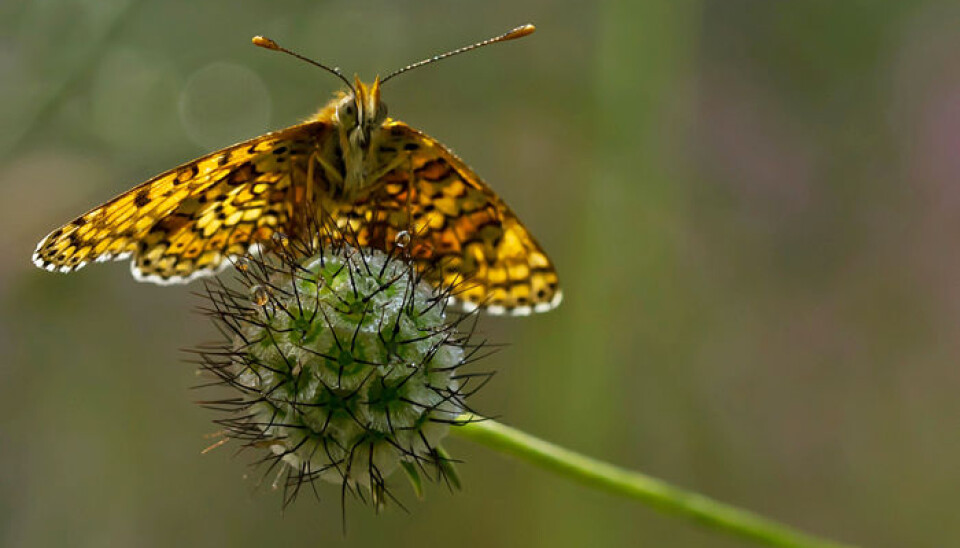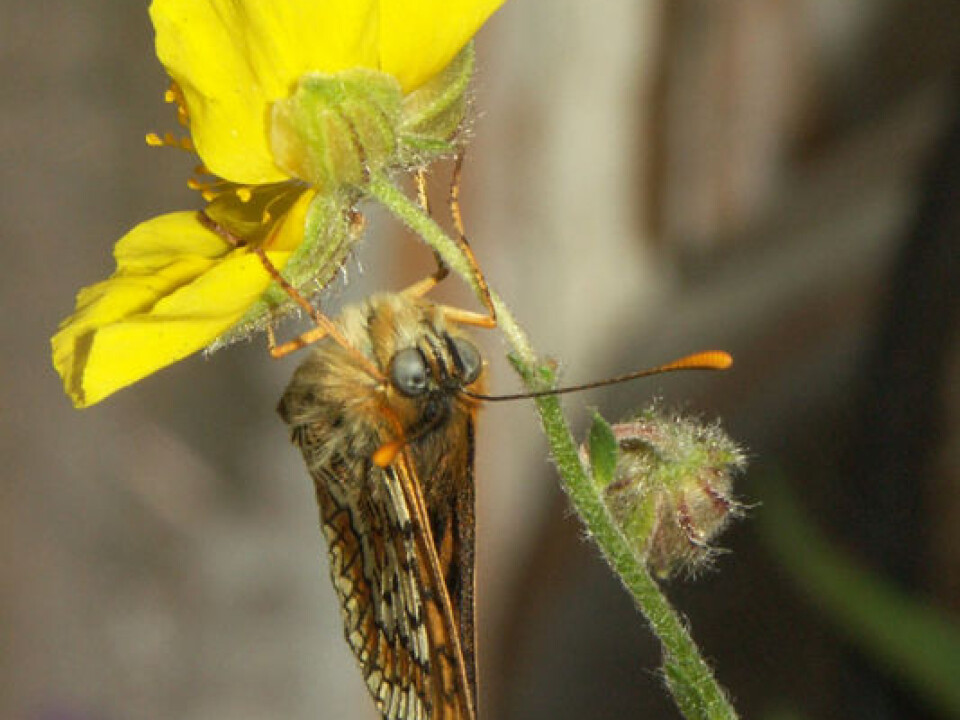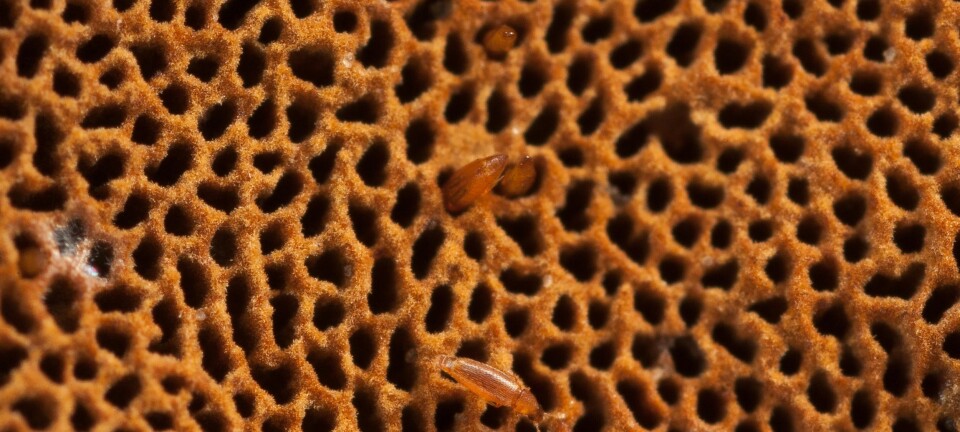
Butterfly hangs on for dear life
A century of strong winds on a tiny island in the Baltic Sea has created butterflies that are especially adapted to keep from blowing away.
Scientists use a hair dryer to simulate high winds to see how Granville Fritallary butterflies cope with increasing wind speeds. The video shows how the butterfly hangs on as long as possible before the wind gets the better of it. (Video: Anne Duplouy)
Life can be hard for butterflies on small islands. They can easily be blown across the sea and end up far from their habitat – with no chance of flying back against the wind.
Butterfly populations on small islands also tend to be quite limited in number.
If the next island or the closest mainland is far off, there’s no guarantee that new individuals will arrive. So every butterfly lost to the wind can be one less individual to reproduce and maintain the population.

The survival of a small butterfly population like this can depend on the insect’s ability to cling to anything that won’t blow away.
Evolution in practice
The evolutionary results of prevailing westerly winds have been found on a little Russian island southeast of Helsinki.
The island is home to a population of Granville Fritallary butterflies. The island was Finnish until the Second World War, and bears the Finnish name Pikku-Tytärsaari.
This isolated population of butterflies has given researchers a chance to study evolution in practice.
The beach meadows where the butterflies live are exposed to strong westerly winds and the population is under constant threat of being blown out to sea.
Curled claws
According to scientists at the University of Helsinki, the strong winds explain why the butterflies from this particular island have specially shaped claws.
All butterflies have tiny hooked claws on the ends of their legs. The Granville Fritallary butterflies on Pikku-Tytärsaari have claws that are more tightly curled than those on the larger island of Åland, further west.
In theory the more tightly curled claws should give the Pikku-Tytärsaari butterflies a better grip than those elsewhere. The difference is nearly microscopic but it can be quantified.
Butterfly versus hair dryer
How do you test the effect of this different shaped claw? The researchers took individuals from Åland and Pikku-Tytärsaari to a laboratory and blew air at them with a hair dryer.
The airstream from the hair dryer consisted of cold air −the heating element was turned off − and the butterflies were placed on a flat wooden surface.
At the start of the tests the hair dryer was 150 centimetres away. The air flow got progressively stronger as the hair dryer was positioned closer to the butterflies.
The Åland butterflies lost their grip when the hair dryer was about 50 centimetres away.
Their tough cousins from Pikku-Tytärsaari managed to hang on until the dryer was just 36 centimetres away.
100 generations
Researchers Anne Duplouy and Illka Hanski of the University of Helsinki say this clearly demonstrates the results of evolution. And in this case the mutation must have been recent.
This population of butterflies was established at Pikku-Tytärsaari by chance about 100 years ago. Their strong grip evolved in about that many generations, because the adult butterflies live only a few weeks and produce only one generation where there is a cold winter season.
Translated by: Glenn Ostling







